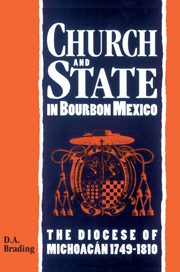2 - Mendicant chronicles
Published online by Cambridge University Press: 01 February 2010
Summary
In his chronicle of the Franciscan province of San Pedro y San Pablo, published in 1643, Alonso de la Rea saluted Michoacán as ‘this earthly paradise’, whose fertile soils were watered by several rivers, lakes and abundant rains. The sugar, fruits and fish of the districts around the lake of Pátzcuaro were matched by the cattle, wheat and maize of the lands lying between Celaya and Querétaro and by the rich silver deposits in the mountain ranges of Guanajuato and Tlalpujahua. The very air was so fresh and temperate that ‘the climate is among the best in the kingdom’. A native of Querétaro, animated by ‘the natural love of patria’, de la Rea celebrated the city and its surrounding gardens and fields as reminiscent of Italy, exclaiming that ‘there is not a citizen who is not a stockman and lord of very great haciendas’. The fertility of nature combined with the benevolent influence of the stars to produce ‘great qualities and talents … as much in the pulpits and college chairs as in the political and moral spheres’. The city already possessed priories of Franciscans, Augustinians and Carmelites, as well as a Jesuit college and a hill sanctuary housing a miraculous cross.
Had written memorials existed, de la Rea would have sought to ‘eternalise the valour of the Tarascans with their politic and military government’, especially since their kingdom had never been conquered by their Aztec cousins. As it was, he recorded that their last monarch had freely submitted to Hernán Cortés, accepting baptism from Martín de Valencia, leader of the Franciscan mission to New Spain.
- Type
- Chapter
- Information
- Church and State in Bourbon Mexico , pp. 20 - 39Publisher: Cambridge University PressPrint publication year: 1994
- 1
- Cited by

